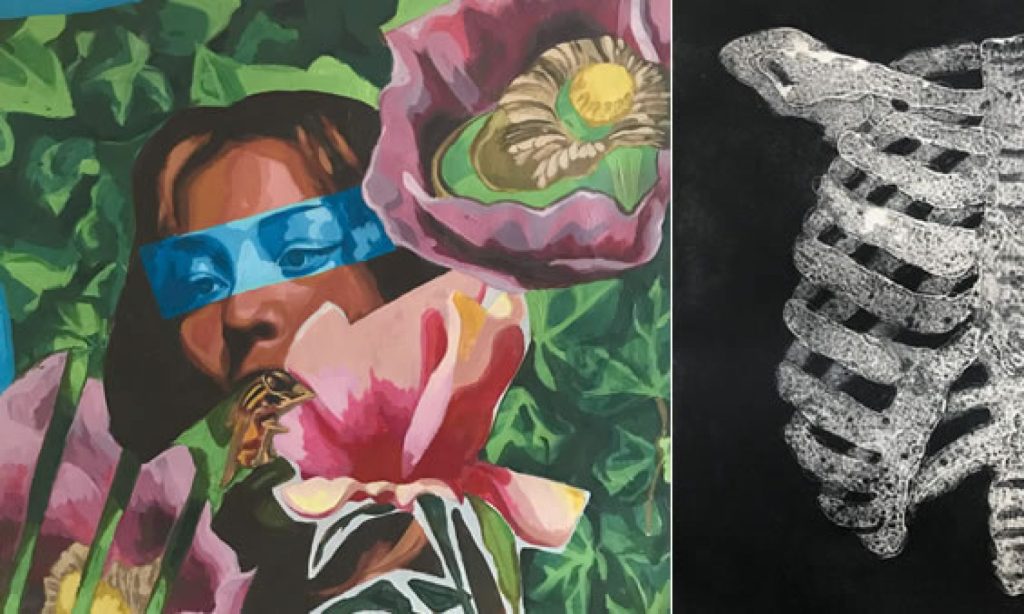Inspired by the audio video synthesisers designed in the 70s, Damien Looney tells us his journey of creating artwork through sound frequencies and old TV screens.

Damien Looney has nothing to say. These are the words listed under his About Me page on his arts design site https://www.ruttetra.com, yet it was anything but. Next to a trio of vintage TVs located under the main student stairs in London College of Communication is where you’ll find him – with screens of abstract colours and gentle hums of sound waves leading you to his artwork. His works imitates the Rutt/Etra video synthesiser created by Steve Rutt and Bill Etra in the early 70s, and follows a delicate process that started off as a year of experimentation before being turned into ‘a body of work now firmly rooted in video art and abstract imagery’.
The Rutt Etra Video Synthesizer was ‘an attempt to begin manipulating video in the same manner as sound was being manipulated in the 1970s’, and was one of the most influential works that changed our relationship to graphic video art. It follows mathematical practices and equations, and one of its most well-known factors was the Z displacement and ‘the change of the depth of an image based on its luminance’.
“I could never sit down and do maths equations or complicated formulas, so with this I was working with very basic information and allowing myself to take it bit by bit”.
Every movement on the television screen is triggered by a sound, formatting extravagant patterns imitating a Matrix-like visionaire that you could easily get lost in. Famous artists who Loomey shares with inspired his work are among Ben Laposky, Bridget Riley and Norman McLaren, with the likes of Laposky and McLaren inspiring a generation of graphic designers and art theories, and being ‘pioneers of generative art’.
“It came from a lot of the audio video synthesisers that were designed in the 60s and 70s. They would be things that were designed to just manipulate imagery in real time, designing kind of like what would become things on television, like television graphics inspired in the 80s and 90s. It’s animated in real time, and animated via audio.”
Looney works full-time as a technician at South Bank University, but was offered a once in a lifetime opportunity to study an MA photojournalism course at UAL fully funded by his profession and is showcasing his work at the annual showcase. “I went way off and did something completely different to what most people are showing today. People have done prints and interactive work but mine is just strictly video.”
When asked about how he wanted people to perceive his work, he shared how he wanted people to look at it and create their own ideas on it. “I don’t go to galleries. I don’t do any reading. You just have to be superficial – there’s literally nothing behind it. It was experimentation with the process.”
To get a better sense of what Rutt Etra video edits look like, you can generate your own images and creations at https://airtightinteractive.com/demos/js/ruttetra/, so you can experience the manipulation of images and physics in the power of your own hands.
